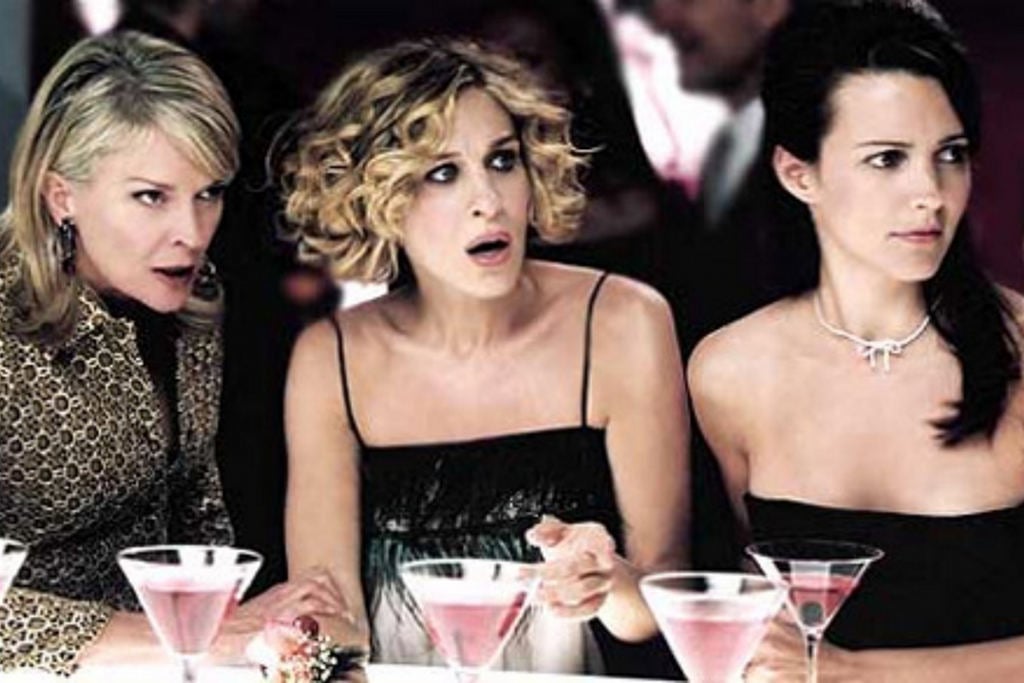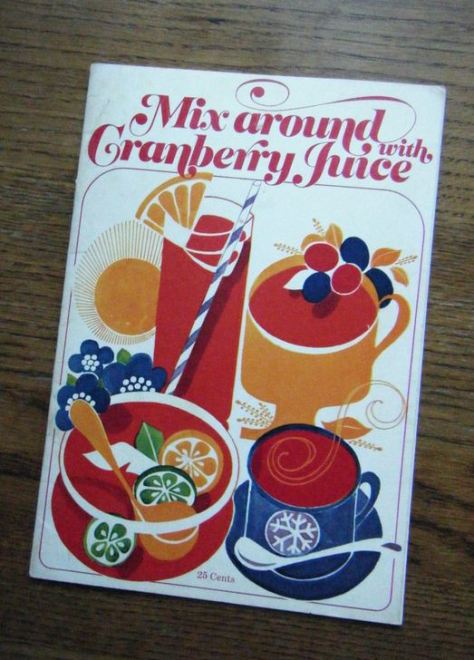In Defence Of The Cosmopolitan
From Madonna's cocktail of choice, to uncool suburban women -- this drink deserves to be revived.


Brought to you by
We’ve teamed up with Stolichnaya, THE Vodka, explore the coloured history of three of the most popular cocktails in the world. Our final instalment? THE Cosmopolitan.
–
Yes, I was one of those women. It was the early noughties. On Monday nights, after a hard day at uni, I’d mix myself a Cosmo and settle in for the latest antics of Carrie, Samantha, Charlotte and Miranda on Sex and the City.
The Cosmo – a frothy pink mixture of vodka, Cointreau or triple sec, cranberry and fresh lime juice – was the tangy taste of millennial feminine sophistication. But how did it get that reputation?
Cranberries, From Rugged to Fabulous
Cranberry juice is what distinguishes today’s Cosmo. A gin-based cocktail called a Cosmopolitan, which appears in the 1934 book Pioneers of Mixing at Elite Bars, got its pink colour from raspberry syrup; cranberry juice simply wasn’t seen as a mixer in the classic cocktail era.
Grown in the northern United States – especially in Massachusetts – cranberries were associated with the jelly served with Thanksgiving turkey, or with sporty health drinks. But the Cosmo noticeably took root wherever cranberry juice was already popular.
 Cocktail authority Difford’s Guide suggests the Cosmopolitan’s ancestor may be the Harpoon: a 1960s vodka-cranberry-and-soda cocktail promoted by cranberry company Ocean Spray, listed in their sponsored recipe pamphlet Mix Around with Cranberry Juice. But Neal Murray claims to have invented the drink at a Minneapolis steakhouse in 1975 by diluting a Kamikaze shooter with cranberry juice — prompting some fabulous bystander to exclaim, “How cosmopolitan!”
Cocktail authority Difford’s Guide suggests the Cosmopolitan’s ancestor may be the Harpoon: a 1960s vodka-cranberry-and-soda cocktail promoted by cranberry company Ocean Spray, listed in their sponsored recipe pamphlet Mix Around with Cranberry Juice. But Neal Murray claims to have invented the drink at a Minneapolis steakhouse in 1975 by diluting a Kamikaze shooter with cranberry juice — prompting some fabulous bystander to exclaim, “How cosmopolitan!”
Meanwhile, 1998 guide Cocktail: The Drinks for the 21st Century suggests the Cosmo was popular in Provincetown, Massachusetts gay bars during the 1970s. That’s where barman John Caine encountered it, and took the recipe west to San Francisco.
The Choice of Material Girls
The fern bar trend was booming in ’70s San Francisco. These preppy pickup joints, mentioned in Armistead Maupin’s Tales of the City, were decorated with indoor plants, overstuffed couches and stained glass lamps. Popular with female patrons, they served ‘girl drinks’: wine spritzers, frozen daiquiris, creamy concoctions, and anything with a smutty name you could order with a wink.
Drinkers who wanted to seem serious and sophisticated now favoured Martinis. But around 1985, Florida bartender Cheryl Cook noticed women weren’t ordering Martinis for the taste, but for the look of that classic glass. Cook later recalled inventing something more palatable: citrus-flavoured vodka, triple sec, Rose’s lime cordial “and just enough cranberry to make it oh so pretty in pink”.
Two years later in New York, Melissa Huffsmith shared a version of the Cosmopolitan with her Odeon coworker Toby Cecchini, who tweaked it with fresh lime juice and Cointreau. Huffsmith might have learned it from anywhere, but theirs is the recipe officially recognised by the International Bartenders Association.
With clientele including Andy Warhol and Jean-Michel Basquiat, the Odeon was a place to be seen: an artier answer to the famous Rainbow Room at the Rockefeller Center. And at the Rainbow Room in 1996, paparazzi photographed Madonna sipping a Cosmopolitan at a Grammy Awards after-party.
So, when Sex and the City premiered in 1998, the Cosmo was already a cocktail for women to be seen drinking. Not yet either a classic or a cliché, it was a status symbol linked to particular cool bars. However, the Cosmopolitan became practically synonymous with the show, whose protagonist Carrie Bradshaw even jokingly orders one at a fast-food drive-through.

The show’s characters strive to find authentic love in a New York driven by appearances. And what better symbol of feminine materialism than a cocktail favoured by the Material Girl herself?
The Drink That Made Everyone A Star
Sex and the City at first critiqued a culture of fast-paced food, fashion and social trends, but ironically sparked trends followed by millions. When it became a movie in 2008, cinemas served Cosmopolitans to female patrons who saw the franchise as a manual for big-city sophistication.
The same year, Toby Cecchini recalled how “these labor-intensive pink monstrosities … became the bane of our existence. Ghoulish people dispensing air kisses at the door would breeze in and bark out that they wanted rounds of them for all their friends.”
Today, the Cosmopolitan is a staple of uncool suburban girls’ nights out. But this modern classic deserves to be revived. Forget Carrie Bradshaw and her millennial consumer angst. Remember the breezy, hopeful ’70s, when Cosmopolitan magazine editor Helen Gurley Brown championed women’s right to enjoy love, sex and money. Even in 1998, at the height of the Cosmo’s SATC-fuelled popularity, Whit Stillman’s movie The Last Days of Disco affectionately summons that early-’80s optimism that preppy hedonism could save the day.
In his 2001 book Straight Up Or On the Rocks: The Story of the American Cocktail, William Grimes writes, “It’s an insider’s cocktail that absolutely everyone drinks, a glossy fake that with effortless charm has insinuated itself into the cocktail repertoire. Like the talented Mr. Ripley, it showed up one day wearing the right clothes.”
–
THE Recipe
Courtesy of Capulet Bar – Fortitude Vally, Brisbane.
Ingredients:
45ml Stoli Premium vodka
25ml Cointreau
10ml lime juice
5ml sugar syrup
30ml cranberry juice
Handful Ice
–
Directions:
1) Shake ice, Stoli Premium vodka, Cointreau, lime, sugar syrup & cranberry juice in a cocktail shaker to combine
2) Strain mix into martini glass
3) Garnish with orange peel/twist
4) Serve immediately
–